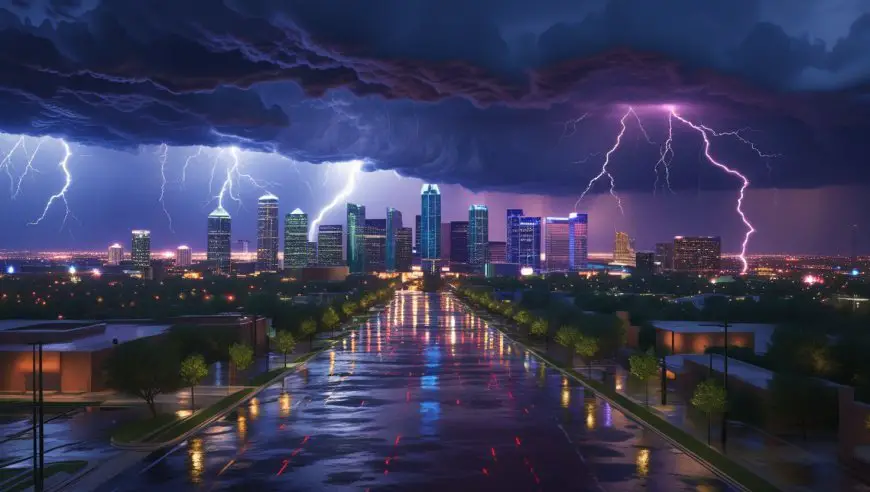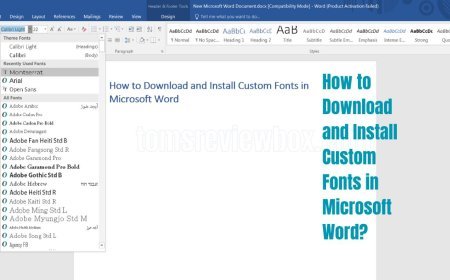How to Stay Safe During Severe Weather in Dallas – Emergency Tips & Forecast
Your complete guide to Dallas severe weather safety. Get expert tips for thunderstorms, tornadoes, and floods. Stay informed with the latest Dallas forecast updates.

The sky over Dallas can be a breathtaking canvas of blue and gold. But as any long-time resident knows, it can also turn a menacing shade of gray in a heartbeat. One minute you're planning a barbecue, the next you're hearing the unmistakable rumble of a powerful Texas thunderstorm. Living in North Texas means accepting that severe weather isn't a matter of *if*, but *when*.
Feeling a little anxious when the weather sirens start to wail? You're not alone. But fear can be replaced with confidence when you have a solid plan. This guide is your go-to resource for navigating everything from a sudden downpour to a serious tornado warning in Dallas. We'll walk you through understanding the risks, preparing your home and family, and knowing exactly what to do when severe weather strikes. Let's get you prepared to face the storm, not fear it.
Understanding the Dallas Weather Landscape
Dallas-Fort Worth sits in a unique geographical spot, making it a prime location for a wide array of weather events. We get the scorching heat, the surprising ice storms, and, most notably, the severe thunderstorms that can spawn tornadoes and cause flash flooding. The key to safety is knowing what you're up against.
When is Severe Weather Season in Dallas?
While a severe storm can happen any time of year, North Texas has a primary severe weather season in the spring (typically April through June). This is when warm, moist air from the Gulf of Mexico collides with cool, dry air from the north, creating the perfect unstable conditions for powerful storms. There's also a secondary, though usually less intense, season in the fall.
Common Types of Severe Weather in DFW
Here's a quick look at what the Dallas sky can throw at us:
| Weather Type | Primary Season | Key Threats |
|---|---|---|
| Thunderstorms | Spring & Summer | Lightning, Hail, High Winds, Flash Flooding |
| Tornadoes | Spring (April-June) | Destructive Winds, Flying Debris |
| Flash Floods | Year-round (Peak in Spring) | Rapidly Rising Water, Dangerous Roads |
| Hail Storms | Spring | Damage to Property (Roofs, Cars), Injury |
| Extreme Heat | Summer (July-August) | Heatstroke, Dehydration |
Before the Storm: Your Texas Weather Emergency Plan
The best way to handle a storm is to be ready long before the first thunderclap. A little preparation goes a long way in keeping you and your loved ones safe. Think of it as weather insurance; you set it up once and it's there when you need it.
Step 1: Get Your Emergency Kit Together
An emergency kit is non-negotiable. If you lose power or are stuck at home, you'll need supplies to last for at least 72 hours. Here’s a checklist for your "Go-Kit":
- Water: One gallon per person, per day.
- Food: Non-perishable items like canned goods, protein bars, and dried fruit. Don't forget a manual can opener!
- First-Aid Kit: Band-aids, antiseptic wipes, pain relievers, and any personal medications.
- Lighting: Flashlights with extra batteries (avoid candles as a fire hazard).
- Communication: A battery-powered or hand-crank NOAA Weather Radio and a portable phone charger.
- Important Documents: Copies of IDs, insurance policies, and bank records saved digitally or in a waterproof bag.
- Cash: Small bills are best if credit card machines are down.
- Specialty Items: Supplies for pets, infants, or elderly family members.
Step 2: Know Your Alerts and Warnings
How do you get a reliable Dallas storm alert? Don't just rely on the outdoor sirens, which are meant to alert people who are outdoors. You need multiple ways to get information.
- Weather Apps: Download a reputable weather app on your phone that provides push notifications for your specific location. Look for apps from local news stations (like WFAA or NBC 5) or the National Weather Service (NWS).
- NOAA Weather Radio: This is the gold standard. It will automatically alert you to watches and warnings issued for your county, even if the power is out or cell service is down.
- Local News: Keep an eye on the Dallas forecast today through local TV and radio stations. Their meteorologists provide crucial, real-time updates.
It's vital to know the difference between a "Watch" and a "Warning":
- Watch: Conditions are favorable for severe weather to happen. It means "Be Prepared." Time to review your plan.
- Warning: Severe weather is happening now or is imminent. It means "Take Action!" This is when you need to get to your safe place immediately.
Step 3: Prepare Your Home
A few simple tasks can help protect your property:
- Trim Trees: Remove any dead or overhanging branches that could fall on your home.
- Secure Outdoor Items: Bring in patio furniture, trampolines, grills, and anything else that could become a projectile in high winds.
- Check Your Gutters: Clean them out to prevent water damage and flooding near your foundation.
- Know Your Shut-offs: Learn how to turn off your home's water, gas, and electricity in case of an emergency.
During the Storm: Critical Storm Safety Tips for Dallas Residents
The sky is dark, the wind is howling, and you've just received a tornado warning Dallas alert on your phone. This is when your preparation pays off. Stay calm and follow these steps.
For a Texas Thunderstorm or Lightning Alert
Thunderstorms are the most common type of severe weather here. The primary dangers are lightning and high winds.
- "When Thunder Roars, Go Indoors!": This simple phrase from the NWS is the best advice. Seek shelter in a sturdy building immediately.
- Avoid a Direct Dallas Lightning Alert: Stay away from windows and doors. Do not use corded phones. Avoid plumbing and electrical equipment (no showering or washing dishes!).
- Car Safety: If you're caught in your car, pull over safely away from trees and power lines. Your car's metal frame can protect you, but avoid touching any metal surfaces inside.
When a Tornado Warning is Issued
Tornadoes are nature's most violent storms. They can happen quickly, with little time to react. This is the most serious Texas weather emergency.
- GET IN: Go inside a sturdy building. Mobile homes are not safe during a tornado.
- GET DOWN: Go to the lowest level possible—a basement, storm cellar, or an interior room on the ground floor with no windows (like a bathroom, pantry, or closet).
- COVER UP: Get under something sturdy like a heavy table or workbench. Cover your head and neck with your arms, and use blankets, pillows, or even a mattress for extra protection from flying debris.
If you're in a car or outside and cannot get to a building, your last resort is to lie flat in a ditch or ravine and cover your head with your hands. Never seek shelter under an overpass or bridge.
A Personal Story: The Garland-Rowlett Tornado
I'll never forget the day after Christmas in 2015. The weather was oddly warm and muggy. My family was gathered, enjoying the holiday leftovers. The alerts started buzzing on our phones—a tornado watch. We kept an eye on the news, but it still felt distant. Then, the tone changed. The meteorologist on TV pointed to a terrifying hook echo on the radar right over Garland and Rowlett. The "watch" became a "warning." The sirens blared. We all scrambled into our interior hallway, huddling together with pillows. The lights flickered and the wind sounded like a freight train, just as they always say. It passed by our neighborhood, but for our neighbors just a few miles east, it was devastating. That night taught me that a "watch" is your time to finalize your plan, because when the "warning" comes, you may only have minutes to act.
For a Dallas Flood Update and Safety
Dallas is surprisingly prone to flash flooding, especially in low-lying areas and near creeks like Turtle Creek. Heavy rain from a stationary Texas thunderstorm can turn a dry street into a dangerous river in minutes.
- Turn Around, Don't Drown®: This is the most important rule. Never drive, walk, or swim through floodwaters. You cannot tell how deep the water is or if the road underneath has been washed away.
- Just Six Inches: It takes only six inches of moving water to knock you off your feet. It takes just one foot of water to float many vehicles.
- Seek Higher Ground: If you are at home and water is rising, move to the highest level of your house. Only get on the roof if necessary and once there, signal for help.
Severe Weather Myths vs. Facts
Misinformation can be as dangerous as the storm itself. Let's clear up some common myths about severe weather safety.
- Myth: Opening windows will equalize pressure and save your house from a tornado.
- Fact: This is a dangerous waste of time. Opening windows does nothing to protect the structure and actually allows more damaging winds and debris to enter your home. Use that precious time to get to your safe room.
- Myth: The southwest corner of a basement is the safest place to be.
- Fact: This is an old belief based on the idea that tornadoes generally move from southwest to northeast. The truth is, the safest place is under something sturdy, in the center of the basement, away from collapsing walls and floors above.
- Myth: Overpasses are safe shelters from a tornado.
- Fact: This is a deadly misconception. An overpass acts as a wind tunnel, increasing the speed of the wind and flying debris. You are far more exposed there than lying flat in a low-lying area.
After the Storm: Staying Safe During Recovery
The danger isn't always over when the sky clears. The aftermath of a severe storm presents its own set of hazards.
- Stay Informed: Continue listening to local news or your NOAA radio for updates and instructions from emergency officials.
- Avoid Downed Power Lines: Always assume a downed power line is live. Stay far away and report it to the utility company immediately.
- Inspect Your Home Carefully: Check for gas leaks, structural damage, and electrical issues before re-entering. If you smell gas or see frayed wires, leave immediately and call for help.
- Document Damage: Take photos and videos of any damage for your insurance claim.
- Be a Good Neighbor: Check on those around you, especially the elderly or those with disabilities, once it's safe to do so.
Your Proactive Approach to Dallas Weather Safety
Living in Dallas means embracing its dynamic and sometimes dramatic weather. By understanding the risks and having a clear, practiced plan, you transform fear into proactive confidence. You can't stop a Texas thunderstorm from forming, but you can absolutely control how prepared you are to face it.
Take an hour this weekend to assemble your emergency kit. Talk through your plan with your family. Download a reliable weather app. These simple actions are the most powerful tools you have to protect what matters most. Don't wait for the sirens to sound. Start today, and you'll be ready for whatever the Dallas sky brings tomorrow.
Emergency Preparedness Checklist for Dallas Residents
Don’t wait for a Texas weather emergency to strike—prepare now.
Essential Items for Your Emergency Kit:
✅ Water (1 gallon per person per day)
✅ Non-perishable food (3-day supply)
✅ First-aid kit & medications
✅ Flashlight + extra batteries
✅ Portable phone charger
✅ Important documents (ID, insurance)
Additional Tips:
-
Know your evacuation routes
-
Have a family emergency plan (meeting spot, contacts)
-
Keep pets in mind (extra food, leash, carrier)
Common Dallas Weather Myths Debunked
Myth 1: "Open windows during a tornado to equalize pressure."
Truth: This is dangerous! Focus on getting to a safe space instead.
Myth 2: "Thunderstorms aren’t a big deal—just rain and noise."
Truth: Severe storms bring lightning, hail, and winds strong enough to topple trees.
Myth 3: "If I don’t see a tornado, I’m safe."
Truth: Tornadoes can form quickly—always take Dallas storm alerts seriously.
Final Thoughts: Stay Alert, Stay Safe
Dallas weather can be unpredictable, but with the right knowledge, you can protect yourself and your family.
Key Takeaways:
✔ Monitor Dallas forecast today updates regularly
✔ Prepare an emergency kit before storms hit
✔ Know the difference between a watch (conditions are favorable) and a warning (imminent danger)
Next time you hear a tornado warning in Dallas or see floodwaters rising, you’ll be ready. Stay safe, Dallas!
What's Your Reaction?







































![MacBook Pro M5: All the features and specs you need to know [LEAKS REVEALED]](https://tomsreviewbox.com/uploads/images/202502/image_430x256_67bd6d7cd7562.jpg)




























